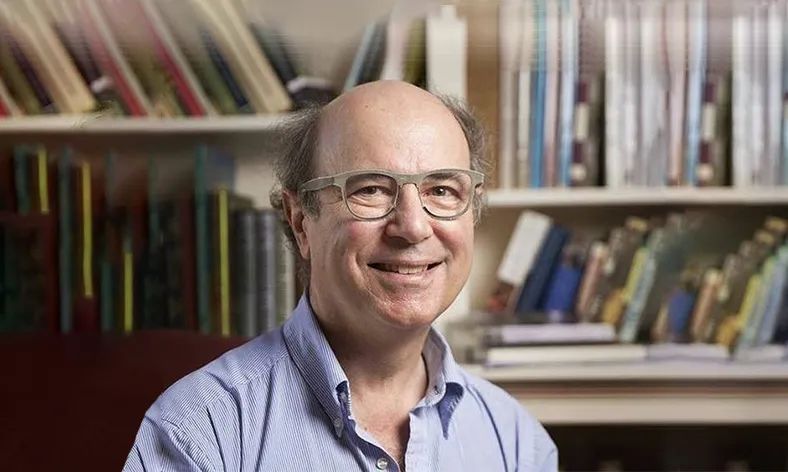撰文 | Frank Wilczek
翻译 | 胡风、梁丁当
中文版

一个不完善的大胆猜想是如何演变为量子物理学新发现的基础理论的?
在50年前的4月27日,《物理评论快报 》(Physical Review Letters)收到了我人生中完成的第一篇学术论文。彼时,我还是美国普林斯顿大学的一名博士生。我和我的导师戴维·格罗斯(David Gross)一起,撰写了这篇简短的学术论文。
现在看来,这篇论文为当时物理界一直在寻找的“强力”理论奠定了基础。“强力”是核物理的核心,它将夸克和胶子结合成质子、中子等基本粒子。强力、引力、电磁力和弱力一起,构成了物理世界的基础。
一开始,我们对这篇论文是否正确完全没有把握。当时,我们只知道如何利用我们的理论计算出一些结果。这些计算与实验数据相比,虽然令人鼓舞,但却非常不准确。三个月后,我们撰写了另一篇更加详尽的论文。在文章结论部分的开头,我们写下了这样一句话 :“本文提出的理论是不完善的。”我们在论文中作了一个大胆的论断 :“我们的理论似乎是自然的唯一选择。”但我们小心翼翼地给自己留了台阶:“假设早期斯坦福直线加速器(Stanford Linear Accelerator)实验的结果和量子场论的重整化群方法都是正确的。”这是一个大胆假设下的大胆论断!
我们的理论立刻吸引了众多研究强力的学者关注。但他们大多数仍对此持怀疑态度。这个研究领域极具声望的理论物理学家理查德·费 曼(Richard Feynman)表示,他希望看到更有力的证据。而另一位物理学家默里·盖尔曼(Murray Gell-Mann)则表示,他想调整我们的理论。对我而言,这个理论竟然能够引起他们的兴趣,我就已经很满足了。后来,我们和其他理论物理学家揣摩出了能计算出更多结果的方法。与此同时,实验技术发展得更好了。终于,借助更加强大的粒子加速器,我们观测到了更高能量尺度和更短距离之下的粒子间相互作用。根据我们的理论预测:在这样的尺度下,粒子的行为会变得简单。现在,我们终于有可能将理论预测和实验数据进行细致、定量的比较了。那么,这个如今被称为量子色动力学(QCD)的理论,能否经受住实验的验证呢?
直到20世纪90年代初,大型高能物理国际会议都会设置“检验QCD”的专题分会。起初,QCD理论的正确性受到了很多质疑。那时的专题分会总是令人兴奋,座无虚席。随着成功检验的消息不断涌现,理论与实验的吻合也越来越令人信服和赞叹,人们的热情却渐渐消退。这有些令人啼笑皆非,却是趋势使然。新闻逐渐变成了历史。
2004年,格罗斯和我因为我们1973年的强力理论工作与戴维·波利策(David Politzer)共同获得了诺贝尔物理学奖。
当初,QCD理论始于一个大胆的猜想,在历经了种种戏剧性的实验验证之后,如今它已成为物理学的基本理论之一,为宇宙起源、中子星物理学和统一场论领域中新的宏伟猜想提供支撑。在高能加速器上,探索的前沿在不断发展。对于当初设立的“检验QCD”,如今已经能做到更加精准。但对那些追求新事物的人们来说,这样的计算已经被称为“背景式的计算”了。科学领域有一句老话:“昨日的发现到今天就会成为基准”。对于基础研究,我还要补充一点“它同时也是明天的背景”。
在这样一个黄金纪念日,宜抚今追昔,鉴往知来。发现金子固然激动人心,令人心向往之。然而,金子之所以是金子,就在于它可以被加工成各种美丽的事物,却永远不会褪色。
英文版
How an ’incomplete’ paper evolved from daring speculation to the established background for new discoveries in the quantum world
Later this month, on April 27, it will be 50 years since I submitted my fifirst re search paper for publication. It was a brief letter, written together with my then-thesis adviser David Gross at Princeton.
In retrospect, that letter cracked the problem of fifinding a fundamental theory of the “strong force,” which together with gravity, electromagnetism and the weak force forms the foundation of physics. The strong force governs nuclear physics through the interactions of quarks and gluons, hidden ingredients that build protons, neutrons and their many relatives.
At fifirst, it was far from clear that our letter got it right We only knew how to calculate a few consequences of our theory, and for those few the comparison with experimental results, while encouraging, was very imprecise. The conclusion of our fuller exposition, written three months later, begins with the statement, “The theories proposed in this paper are incomplete.”
We staked a bold claim: “The proposed theories appear to be uniquely singled out by nature.” But we hedged it with a mouthful of caution: “if one takes both the results [of early experiments at the Stanford Linear Accelerator] and the renormalization-group approach to quantum fifield theory at face value.”
A big claim-with big ifs!
Knowledgeable researchers studying the strong force were intrigued but mostly skeptical. One of the giants of the fifield, Richard Feynman, wanted to see better evidence. Another, Murray Gell-Mann, wanted to tweak the theory. But for me, the big point was that they were interested at all.
In the months that followed, we and other theorists fifigured out how to calculate more things, and the experiments got better. Eventually, more powerful particle accelerators let us see interactions at higher energies and shorter distances, where the theory predicts simpler behavior. It became possible to make detailed, quantitative comparisons between our predictions and experimental measurements. Would our theory-now generally known as quantum chromodynamics, or QCD-survive unscathed?
For many years, through the early 1990s, big international conferences on high-energy physics featured sessions on “testing QCD.” At fifirst, when the validity of QCD was in doubt, those sessions were exciting and well attended events. Ironically, but inevitably, as success followed success and the comparisons between theory and experiment got more convincing and impressive, the excitement faded. News evolved into history. Epitomizing that transformation, David Gross and I got a Nobel Prize for our early work (shared with David Politzer) in 2004.
By now, QCD has passed from daring speculation through dramatic testing to routine usage. It has become a service subject that supports a new generation of ambitious speculations in early-universe cosmology, neutron star physics and unifified fifield theory.
At high-energy accelerators, the frontier of exploration has moved on. What was once called “testing QCD” is now done much more precisely. But people looking for something newer refer to it as “calculating backgrounds.”
There’s a saying in science and technology that “yesterday’s sensation is today’s calibration.” In basic research, I’d extend that to include “and tomorrow’s background.”
Such wistful thoughts befifit a golden anniversary. Discovering gold is thrilling and glamorous, but what makes gold special is that it can be worked into beautiful things that do not tarnish.
Frank Wilczek

弗兰克·维尔切克是麻省理工学院物理学教授、量子色动力学的奠基人之一。因发现了量子色动力学的渐近自由现象,他在2004年获得了诺贝尔物理学奖。
本文经授权转载自微信公众号“蔻享学术”。
0
推荐




 京公网安备 11010502034662号
京公网安备 11010502034662号 